Drift Glossary
Here is a Drift Glossary of drifting terms I have complied. I hope people interested in the motorsport of drifting find these Drift Definitions helpful and informative. Please feel free to comment and add drifting terms that I may have omitted Here.
AE86
src="http://pagead2.googlesyndication.com/pagead/show_ads.js">
The Toyota AE86 is a classic car for drift enthusiasts. Years produced 1984-1987 Toyota Corolla GTS. Runs on the DOHC 4-AGE motor, rear wheel drive and LSD. In Japan and in the hardcore drifting community worldwide, the AE86 is commonly referred to as the “Hachiroku” which is the car’s Japanese name and translated literally means “Eight” – “Six.”
Body
Chassis preparation is similar to a road-racing car. Roll cages are sometimes employed for safety, and to improve the torsional rigidity of the car’s frame, but are compulsory in events that involves the 2+ cars tsuiou runs in the event of a side collision. Front and rear strut tower braces, B-pillar braces, lower arm braces, and master cylinder braces are all used to stiffen the chassis. The interior is stripped of extraneous seating, trim, carpet, sound deadening; anything that is not essential is removed to reduce weight.
Body kits are usually attached with cable ties. When the body kit meets the wall or curb, the cable ties snap, releasing the part, as opposed to breaking it.
As drift cars are pushed faster, aerodynamic tuning becomes more important as well. Rear spoilers and wings usually are useful only in large, open tracks where the cars develop enough speed to create a need for more downforce. Wheel arches are often rolled or flared to allow the fitment of larger tires. Airflow to the engine is critical, so the hood is often vented.
Due to the nature of the hobby, drift cars are typically involved in many minor accidents. Thus, those involved with the sport tend to avoid expensive or easily damaged body kits and custom paintwork. Typically drift cars will show signs of body damage: dents, cracked bumpers and applications of duct tape.
Bosozoku
Japanese word to describe groups of motorcycle and car riding hooligans who stop traffic with their wild driving antics. Bosozoku have been known to bash members with iron pipes for trying to leave the group.
Braking Drift
This drift is performed by braking into a corner, so that the car can transfer weight to the front. This is immediately followed by throttle in a RWD car causes the rear wheels to lose traction. FWD cars can also use this technique, as it does not depend on the rear wheels being driven.
Chicane
A quick left to right or right to left “S-turn” usually placed at the end of straightaways in order to slow drivers down before they reach the tighter - slower corners.
Choku-Dori (also: Chaku-Dari)
This is done by swaying the car’s weight back and forth on straightaways, using countersteer and throttle to maintain a large angle. This is a show maneuver that usually involves many cars following the same line.
*Here is an alternate definition for Choku-Dori, I include because I’m not sure which is true. A long sliding drift through a braking zone. Oftentimes in the US, Choku-Dori is misused to describe a side to side swaying drift typically used on straightaways (aka Manji).
Clutch Kick
This is done by “kicking” the clutch (pushing in, then out, usually more than one time in a drift for adjustment in a very fast manner) to send a shock through the powertrain, upsetting the car’s balance. This causes the rear wheels to slip. The foot should be at an angle so the brake and gas may be pressed as well, this being needed to control speed and stop from spinning out in the drift.
Countersteer
Corrective steering used to balance and maintain an oversteered condition. (turning the steering wheel in the opposite direction of the turn once the vehicle starts to oversteer).
D1 Grand Prix
D1 Grand Prix is one of the premier drifting competitions in the world held in various locations including Japan, USA, Europe, and Asia. Legendary driver “Drift King” Keiichi Tsuchiya judges the D1 Grand Prix.
The D1 holds a multiple round point competition in which drivers compete for both individual event wins and overall season points. Competitions typically consist of a qualifying day for competitors to determine the top 32 drivers. The top 32 enter competition and perform a solo pass for judgment and further elimination. The next round consists of the top 16 drivers who, from this point in the competition on, are competing in head-to-head “Tsuiso” tandem drifting format. The drivers are eliminated round by round until one driver emerges as champion.
Dirt Drop
This is done by dropping the rear tires off the sealed road onto dirt or gravel, or whatever low-grip surface borders the road, to maintain or gain drift angle. Also called “Dirt Turbo”.
Donut
Applying enough horsepower to the rear wheels of a vehicle to spin the tires, causing the car to rotate around the front end, again and again.
Drafting
To gain aerodynamic advantage by following closely behind a lead vehicle.
Drift
A Drift occurs when a vehicle’s momentum or horsepower exceeds the cars tire traction, thus causing the car to slide laterally or sideways. Through driver skill and certain car modifications, this seemingly out of control state know as drifting can be controlled and actually enables the driver to maintain higher rates of speed through corners.
Drift-zoku
Japanese term for racers who are in love with drifting, sliding their cars, and spining their tires.
Drift Angle
Drift angle is the angle a car maintains during a drift. Drift angle is important in competition and is often judged as part of a driver’s style - the more extreme the drift angle the better.
Drift King
A legendary Japanese race car driver by the name of Keiichi Tsuchiya. Keiichi Tsuchiya is truly a living legend in the world of drifting. Although many may claim to be as good, there is only one true Drift King – Keiichi Tsuchiya.
Drift Run
Refers to any vehicle proceeding through the designated Drift Course or Track.
Drive Train
A proper mechanical limited slip differential (LSD) is almost essential for drifting. Open diffs and viscous diffs cannot be controlled during a sustained slide. All other modifications are secondary to the LSD. Popular drift LSDs include OS Giken, KAAZ, and Cusco.
The most popular form of LSD for drifting is the clutch type, in “2-way” form; this is preferred for its consistent and aggressive lockup behavior under all conditions (acceleration and deceleration). Some drift cars use a spool “differential”, which actually has no differential action at all, the wheels are locked to each other. Budget drifters also use the welded differential, where the side gears are welded to give the same effect. This makes the car very easy to slide at high speed, but difficult to park, and is hard on the driveline. Torsen and Quaife (available on cars such as S15, FD3S, MX5, JZA8x, UZZ3x) diffs are adequate, but not generally available aftermarket.
The clutches on drift cars tend to be very tough ceramic brass button or multiple-plate varieties, for durability, as well as to allow rapid “clutch kick” techniques to upset the balance of the car. Gearbox and engine mounts are often replaced with urethane mounts, and dampers added, to control the violent motion of the engine/gearbox under these conditions.
Gear sets may be replaced with closer ratios to keep the engine in the power band. (Japanese drifters confuse the “L” and call these “cross-mission”.) These may be coarser dog engagement straight cut gears instead of synchronized helical gears, for durability and faster shifting at the expense of noise and refinement. Wealthier drifters may use sequential gearboxes or sequential adapters to make gear selection easier/faster.
E-Braking (also: Hand-Braking, Side-Braking)
In drifting, a vehicle’s emergency brake can be applied during the entry of a corner and with proper technique, lock up the rear wheels for a brief moment causing them to loose traction and skid thus inducing the drift. Emergency brakes only affect the rear wheels of a vehicle.
Engine
Engine power does not need to be high, and in fact if a car has too much power, it can be very hard to handle during a drift. Each driver has their own preference, and drift cars can be found with anything from 100bhp (74kW) to 1000bhp (745kW). Typically, engine tuning is oriented towards achieving linear response rather than maximum power output. Engines also must be equipped with upgraded cooling systems. Not only are the engines pushed very hard, creating lots of heat, but being driven at an angle reduces the airflow through the radiator. For turbocharged engines, intercooler efficiency is similarly reduced. Oil coolers are almost essential. V-mounting the intercooler and radiator improves flow through these components, and keep the expensive intercooler out of harm’s way in the inevitable crash.
Exhibition Drift
The purpose of drifting at the Drift Session is to cause maximum oversteer in a vehicle while maintaining speed. Vehicles are not judged based on time trials or speed but rather on the completion of clean and exaggerated drifts which maintain a reasonable rate of speed, drift angle and overall style. Exhibition Drifting includes techniques such as one hand drifting, opening the car door while drifting, hanging their legs and body out of the car, running behind the car, ect.
Formula D
Formula D is the American equivalent of drifting’s premier championship in Japan, the D1 Grand Prix. Formula D is sponsored by the popular video game series, Need for Speed. Its official name is “Need for Speed Formula Drift Presented by Circuit City.” It was inaugurated in 2004, and is a division of the Sports Car Club of America.
Guardrails
Concrete, cones, tires, sand, gravel or a combination of the bunch used to protect the drivers and pedestrian spectators from out of control cars. In drifting, as a demonstration of style and driver skill, drivers will get as close to the barriers without hitting them as possible.
Hashiriya
Japanese term to describe racers actively involved in the Japanese racing culture. Although these drivers often race on public roads, they try their best not to disrupt traffic or obstruct other drivers.
Heel-Toe Shifting
A drifting technique where the clutch is pressed with the left foot while the right foot presses the brake with the toes and the heel slides over to the accelerator to rev the engine up before downshifting the vehicle. Heel-Toe shifting allows for smooth downshifting, without jolting the vehicle. This is important during the drift in order to maintain consistent speed and drift angle.
Ikaten
Regional drift contests, started by Video-Option, open to the public and professionally judged.
Inertia Feint Drift (or “Scandinavian Flick”)
This is done by transferring the weight of car towards the outside of a turn by first turning away from the turn and then quickly turning back using the inertia of the rear of the car to swing into the desired drifting line. Sometimes the hand brake will be applied while transferring the weight of the car towards the outside to lock the rear wheels and help the rear swing outwards. This type of drifting causes the car to accelerate faster afterwards, because of momentum built up while drifting.
JDM
Short for Japanese Domestic Market
Kansei (also: Lift Off, Taking In)
By letting off the accelerator while cornering at very high speeds, cars with relatively neutral handling will begin to slide, simply from the weight transfer resulting from engine braking. The drift is controlled afterwards by steering inputs from the driver and light pedal work, similar to the Braking drift.
Limited Slip Differential (LSD)
Axle gearing that allows power to be transferred to the wheel with the most traction. Similar to Chevrolet’s “Positraction.” Limited Slip Differential allows both rear wheels to “lock up” and spin at the same time. LSD is essential when building a drift car.
Oversteer
During a turn, the car is said to oversteer when the REAR wheels do not track behind the front wheels but instead slide out toward the outside of the turn in a more straight-line trajectory.
Power Oversteer (Powerslide)
This drift is performed when entering a corner at full throttle to produce heavy oversteer through the turn. The excess power causes the drive wheels to lose traction in a RWD or AWD car. This is the most typical drifting technique for all-wheel drive cars.
Road Course
A racing course made up of actual roadways and/or highways consisting of various straightaways, corners, and bends. For example: a large parking lot with cones to designate a course would not equal a “road course” - nor would an oval-track.
Rolling-zoku
A Japanese term for extremely dedicated touge enthusiasts. Also includes bikers and anyone else who likes hard turns, winding mountian roads, and highways.
Roulette-zoku
Japanese term for racers who drive round and round on circular highways or racetracks.
Shift Lock (also: Compression Slide)
Initiated by downshifting (usually from third to second or fourth to third, and using a very fast shift) instead of braking, without rev-matching, causing the drive wheels to lock momentarily. Helpful for very tight corners, allowing the driver to approach the corner at a slower speed and lower revs, while allowing quick acceleration when exiting the corner. This technique can be very damaging to the engine if mis-used as the ECU is unable to rev limit when the engine is oversped by the rear wheels. Premature downshifters are called “Rod Stretchers”.
Short Course
The track used at Drifting events and most major racing competitions.
Silvia
Silvia is the Japanese version of Nissan’s 240SX. The Silvia’s latest models come in S13, S14, or S15 variations. Typically coveted for its low cost, sporty look, and relatively powerful turbocharged 4-cylinder engine the SR20-DET. The Nissan Silvia is one of the most popular drift cars.
Ski Drift
This extremely difficult and dangerous drift is done by drifting while the car is on two wheels. If not done perfectly, the car will likely roll over and crash.
Skidpad
A skidpad is a large, circular area of flat pavement used for various tests of a car’s handling. The most common skidpad use is testing lateral acceleration, measured in g.
The test is carried out on a circular track with a radius of 300 ft (100 metres). A car driving on said track is slowly accelerated until the outermost tires on the car begin to slip. Going any faster would cause the car to drive outside the 300 ft radius. At this point, the speed of the car is recorded, and given the centripetal force formula mv²/r, a car’s handling in terms of lateral g-forces can be derived.
Steering
With increased steering angle it is possible to achieve greater angle with the vehicle, it will also aid in spin recovery. This is often done with spacers on the steering rack, custom steering racks, custom tierod ends, or machining the spindles. Increased steering angle often requires other modifications, as at some point the tire or wheel will come in contact with other suspension pieces or the inner/outer fenders.
Suspension
The suspension in a drift car tends to have very high spring and damper rates. Sway bars are upgraded, particularly on the rear. Caster is often increased to improve the car’s controllability during a slide. Most cars use an integrated coilover/shock (MacPherson strut) combination. This type of suspension allows the ride height to be adjusted independently of the suspension travel. There is no perfect height setting or spring/shock combo for any car, but each driver will have their own personal preference. Many suspension manufacturers offer suspension tuned specifically for drifting, allowing many people to enter the sport competitively.
Bushings can be upgraded with urethane parts. Most Nissan vehicles have a floating rear subframe which is usually fixed in position with billet aluminum or urethane “drift pineapples”, to prevent the frame moving during drift.
One suspension tuning method, still popular in Japan, is known as “Demon Camber” (Japanese Oni-kamu). It involves setting the suspension with extreme negative camber in the front to reduce slide. Negative camber on the rear would only induce understeer, making the car more difficult to drift. The front of the car having better grip and less tendency to slide, it is easier to swing the rear of the car around to get a good drift angle. However stability, grip, and overall ability to control the car are compromised. It has thus fallen out of favor as a serious performance-minded suspension setup. However, many cars built for show (such as those driven by bōsōzoku) still use this style of suspension setup for its aggressive look. A few degrees of toe-out on the rear wheels in some vehicles (leading edges angled outward) can improve turn-in, and make setting up a drift a little easier.
Tires
Drift cars often have different tires on the front and back, and the owner may have quite a few sets. This is because a single afternoon of drifting can destroy a new set of tires. As a rule, good tires go on the front for good steering. On the back, hard-compound tires are used, quite often second-hand ones tend to end up in a cloud of smoke. 15″ wheels are common on the rear, as 15″ tires are cheap. As a driver gets better, they will most likely want to upgrade the tires used in the rear for a higher grip compound. Although cheap/hard tires are fun purely for their slipperiness and ease of drifting, they quickly become a hazard for high-speed drifts. More advanced drivers require the most grip possible from all 4 tires, so as to retain control adequately during high speed drifts. Competitive drifters often run DOT approved tires closer to racing tires, which is permitted, with the exception of some major championships including D1GP which only permits commercially available tires that are approved by them. The grip is required for control, speed, and a fast snap on the initial entry.
Some companies have started to create tires with special effects for drifting. One such company is Kumho. They recently released tires designed especially for the drifting crowd. These new tires produce colored smoke instead of regular grey smoke when drifted. Furthermore, they are not permitted in many competitions, as they are seen as giving an unfair advantage to teams with the funding to utilize them, as they are currently too expensive to be used by the amateur
src="http://pagead2.googlesyndication.com/pagead/show_ads.js">
competitor.Generally drifting consumes tires rapidly and multiple sets may be necessary for a single professional event.
Touge
A winding road suited specifically for drifting. Touge is a Japanese word literally meaning “pass.” It refers to a mountain pass or any of the narrow, winding roads that can be found in and around the mountains of Japan and other geographically similar areas.
Placing a series of turns or bends in the steep roads that provide access to and from the high elevations of the mountains was intended to be a safety measure, usually to prevent commuters from reaching unstable speeds or creating excessive wear on the vehicles associated with them. It is therefore ironic that these same passes have become popular with street racers and motorsport enthusiasts in the last two decades, providing a dangerous and therefore challenging course where nightly competitions sometimes occur.
Tsuiso Battle
When two drift cars go head to head in a tandem drift run.
Understeer
A loss of traction in a vehicle’s FRONT tires, caused by excessive speed in relation to a cornering angle, causing the vehicle to slide outwards during a turn. Understeer is the opposite of Oversteer.
Vanning-zoku
Japanese term for cruisers who turn their vans into eye-catching, music pounding machines in order to park, blast tunes, and dance. These vans are mobile dance clubs!
Zeroyon-zoku
Japanese term for racers, mainly in cars, who compete on a 400 meter straightaway.

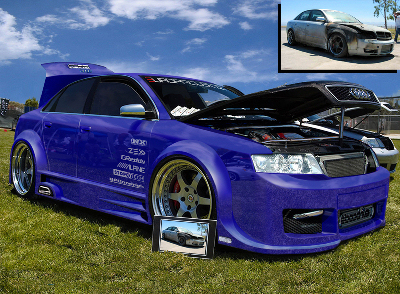

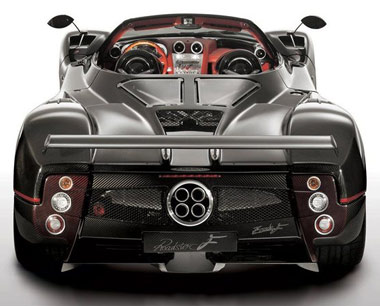
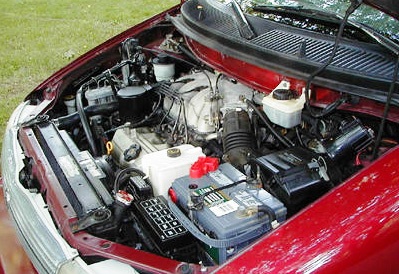
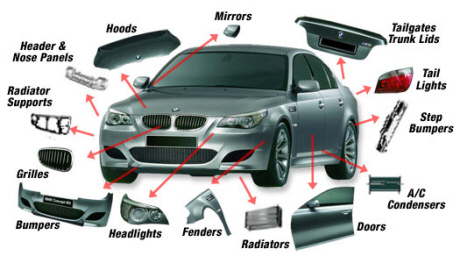
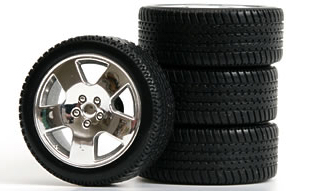


 Yashio Factory is introducing an entire line of products designed to keep your Nissan Silvia running cool on the track and street. The Yashio Factory Digital Water Temperature Meter, Water Sprayer System, and Super Water Pump Pulley are designed to work in harmony to reduce harmful temps in your drift car’s cooling system.
Yashio Factory is introducing an entire line of products designed to keep your Nissan Silvia running cool on the track and street. The Yashio Factory Digital Water Temperature Meter, Water Sprayer System, and Super Water Pump Pulley are designed to work in harmony to reduce harmful temps in your drift car’s cooling system. Normally drift tuning shops modify stock knuckles into their own original shapes to increase maximum steering angle. Now GP Sports has created an original die-cast knuckle specify designed for drifting that takes drift angle to the next level.
Normally drift tuning shops modify stock knuckles into their own original shapes to increase maximum steering angle. Now GP Sports has created an original die-cast knuckle specify designed for drifting that takes drift angle to the next level.  Okachan of Yashio Factory has developed his first suspension reinforcement part for the Nissan Silvia (240SX). The extreme weight transfer experienced when drifting puts tremendous pressure on the tension rods and in the long run this pressure damages the core support’s spot welding. Once the spot welding is damaged, it’s a big job to fix including dismounting the bumper, radiator, intercooler, etc. “The Extreme” Core Support Guard is designed to reinforce this weak point of stock Silvias. In addition to strengthening the tie rod core, the Yashio Factory Core Support Guard increases the direct feeling to the wheels in steering giving the driver quicker suspension feedback for enhanced handling. The Yashio Factory Core Support Guard sells in pairs for around $165 USD (17,700 JPY).
Okachan of Yashio Factory has developed his first suspension reinforcement part for the Nissan Silvia (240SX). The extreme weight transfer experienced when drifting puts tremendous pressure on the tension rods and in the long run this pressure damages the core support’s spot welding. Once the spot welding is damaged, it’s a big job to fix including dismounting the bumper, radiator, intercooler, etc. “The Extreme” Core Support Guard is designed to reinforce this weak point of stock Silvias. In addition to strengthening the tie rod core, the Yashio Factory Core Support Guard increases the direct feeling to the wheels in steering giving the driver quicker suspension feedback for enhanced handling. The Yashio Factory Core Support Guard sells in pairs for around $165 USD (17,700 JPY).

 A blow off valve, BOV for short, is a vacuum or electronically actuated pressure release valve present in engines with turbochargers. Blow off valves release excess boost into the atmosphere when the throttle is closed. The purpose of a blow off valve is to reduce turbo lag and protect the engine from compressor surge.
A blow off valve, BOV for short, is a vacuum or electronically actuated pressure release valve present in engines with turbochargers. Blow off valves release excess boost into the atmosphere when the throttle is closed. The purpose of a blow off valve is to reduce turbo lag and protect the engine from compressor surge.  Wheel spacers move the wheel out away from the hub widening the stance of a car. Wheel spacers are used to fit low offset aftermarket wheels, accommodate large brake caliper upgrades, make wheels look flush on a wide body kit, and even increase drift angle. If you are running stock length arms, up to a 1/8 inch spacer can be used without changing studs to give you a little more drift angle.
Wheel spacers move the wheel out away from the hub widening the stance of a car. Wheel spacers are used to fit low offset aftermarket wheels, accommodate large brake caliper upgrades, make wheels look flush on a wide body kit, and even increase drift angle. If you are running stock length arms, up to a 1/8 inch spacer can be used without changing studs to give you a little more drift angle.  DriftBox is an electronic device that uses a GPS engine coupled with motion and yaw rate sensors to measure speed, position, acceleration and drift angle of a car. DriftBox was originally designed to provide real time stats to D1 Grand Prix Judges to make evaluating drivers runs more precise. There are two versions of DriftBox – DriftBox and DriftBox Pro. The main difference being that DriftBox Pro can relay information in real time via radio signal. DriftBox Pro is the system used by D1 Grand Prix.
DriftBox is an electronic device that uses a GPS engine coupled with motion and yaw rate sensors to measure speed, position, acceleration and drift angle of a car. DriftBox was originally designed to provide real time stats to D1 Grand Prix Judges to make evaluating drivers runs more precise. There are two versions of DriftBox – DriftBox and DriftBox Pro. The main difference being that DriftBox Pro can relay information in real time via radio signal. DriftBox Pro is the system used by D1 Grand Prix.  DriftBox has been used by the UK television program Top Gear and automotive magazines like EVO, Redline, Banzai, and Japanese Performance during track testing to calculate vehicle performance. In addition to the features above, DriftBox can also measure 0-60, 0-100, 0-100-0, braking distances, quarter mile times, and lap times using a virtual start/finish line generated from the latitude and longitude measurements from the GPS system. Plug the base model DriftBox into your cigarette lighter and it’s ready to go.
DriftBox has been used by the UK television program Top Gear and automotive magazines like EVO, Redline, Banzai, and Japanese Performance during track testing to calculate vehicle performance. In addition to the features above, DriftBox can also measure 0-60, 0-100, 0-100-0, braking distances, quarter mile times, and lap times using a virtual start/finish line generated from the latitude and longitude measurements from the GPS system. Plug the base model DriftBox into your cigarette lighter and it’s ready to go. 
 Stretching a thin tire onto a wide rim decreases a wheel’s standard tire width resulting in a smaller contact patch and less traction. When learning how to drift this can be advantageous since you can get the car sliding sideways at lower speeds. However in pro level drifting events, drifters need as much traction as possible out of their tires to control their drift cars at 100+ mph so initially it seems that hipari tire would not be the best choice but pro drifters found a solution. D1 Grand Prix drifters get around the traction loss issue by using super wide wheels that fit tires they would usually use on their car so the overall contact patch stays the same. This gives the hipari look without loosing traction.
Stretching a thin tire onto a wide rim decreases a wheel’s standard tire width resulting in a smaller contact patch and less traction. When learning how to drift this can be advantageous since you can get the car sliding sideways at lower speeds. However in pro level drifting events, drifters need as much traction as possible out of their tires to control their drift cars at 100+ mph so initially it seems that hipari tire would not be the best choice but pro drifters found a solution. D1 Grand Prix drifters get around the traction loss issue by using super wide wheels that fit tires they would usually use on their car so the overall contact patch stays the same. This gives the hipari look without loosing traction. 










 Nitrous Oxide, Nitrous, or simply NOS is a chemical compound (N2O) that when introduced to a car’s engine increases horsepower performance. Typically, nitrous is not used in competitive drifting, instead, nitrous oxide is most commonly used in drag and street racing applications - drifting requires delicate use of horsepower to control drift angle but there are drifters that use nitrous like Japanese drifter Shuichi Yoshioka in his Nissan S15 Silvia. “The car has only 400ps (395hp). If two cars go into a curve at the same speed, the car that has more horsepower has more control. I use NOS to get more power,” says Shuichi Yoshioka.
Nitrous Oxide, Nitrous, or simply NOS is a chemical compound (N2O) that when introduced to a car’s engine increases horsepower performance. Typically, nitrous is not used in competitive drifting, instead, nitrous oxide is most commonly used in drag and street racing applications - drifting requires delicate use of horsepower to control drift angle but there are drifters that use nitrous like Japanese drifter Shuichi Yoshioka in his Nissan S15 Silvia. “The car has only 400ps (395hp). If two cars go into a curve at the same speed, the car that has more horsepower has more control. I use NOS to get more power,” says Shuichi Yoshioka. 
 The Trust Company was founded in Japan in 1977. The Trust Company owns several popular automotive brands like GReddy, GREX, and GRacer.
The Trust Company was founded in Japan in 1977. The Trust Company owns several popular automotive brands like GReddy, GREX, and GRacer.  A turbocharger, short for turbine driven supercharger, is an exhaust gas driven forced induction device used to improve engine performance by forcing compressed air into the engine. This compressed air allows more fuel to be burned resulting in more horsepower. Using a compressor to increase pressure at the point of cylinder air intake is referred to as forced induction vs. a non-turbo engine that is known as naturally aspirated.
A turbocharger, short for turbine driven supercharger, is an exhaust gas driven forced induction device used to improve engine performance by forcing compressed air into the engine. This compressed air allows more fuel to be burned resulting in more horsepower. Using a compressor to increase pressure at the point of cylinder air intake is referred to as forced induction vs. a non-turbo engine that is known as naturally aspirated. 

 HKS is a Japan based automotive engineering company that produces high performance aftermarket parts like: exhaust, intakes, suspension, turbochargers, superchargers, blowoff valves, fuel management components, intercoolers, and camshafts for JDM vehicles. HKS has sponsored many famous drivers over the years and competed in many forms of motorsports including D1 Grand Prix, drag racing, F3, and JGTC.
HKS is a Japan based automotive engineering company that produces high performance aftermarket parts like: exhaust, intakes, suspension, turbochargers, superchargers, blowoff valves, fuel management components, intercoolers, and camshafts for JDM vehicles. HKS has sponsored many famous drivers over the years and competed in many forms of motorsports including D1 Grand Prix, drag racing, F3, and JGTC. 








 Brakes are an important part of any drift car. In most cars, the parking brake, hand brake, side brake, emergency brake or e-brake as it may be known, only affects the rear wheels. Since you will be using the e-brake to initiate the drift and to correct drift angle once the car is sliding sideways, you need to make sure the rear brake pads are in good condition. Otherwise, you will have a hard time getting the rear wheels to lock up when you pull the e-brake.
Brakes are an important part of any drift car. In most cars, the parking brake, hand brake, side brake, emergency brake or e-brake as it may be known, only affects the rear wheels. Since you will be using the e-brake to initiate the drift and to correct drift angle once the car is sliding sideways, you need to make sure the rear brake pads are in good condition. Otherwise, you will have a hard time getting the rear wheels to lock up when you pull the e-brake.  Drift angle is the angle a car maintains during a drift. Drift angle is important in competition and is often judged as part of a driver’s style - the more extreme the drift angle the better.
Drift angle is the angle a car maintains during a drift. Drift angle is important in competition and is often judged as part of a driver’s style - the more extreme the drift angle the better.  Increased steering angle often requires other modifications as well because at some point, the tire or wheel will come in contact with other suspension pieces, the fenders, or wheel wells.
Increased steering angle often requires other modifications as well because at some point, the tire or wheel will come in contact with other suspension pieces, the fenders, or wheel wells. 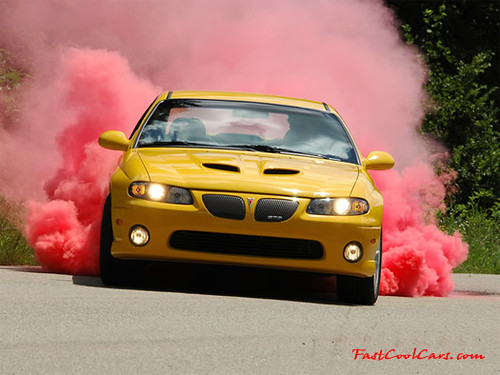
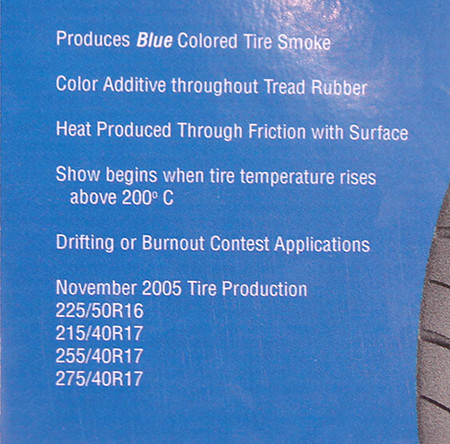
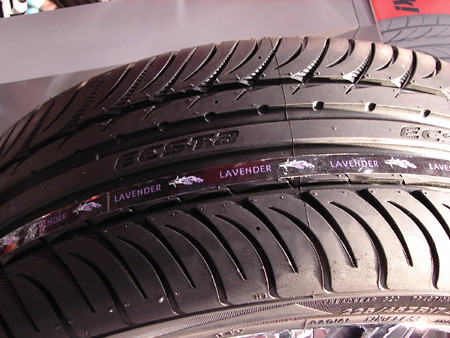
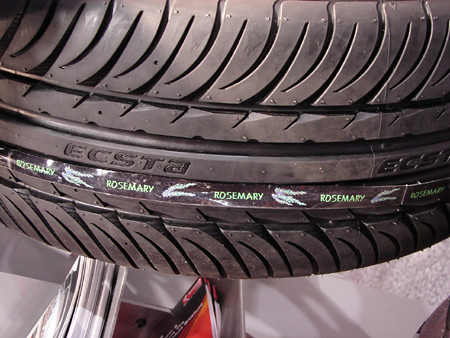


 Camber angle is the angle of the wheel when viewed from the front or rear of the car. There are three possible angles, positive camber, neutral camber and negative camber. If the top of the wheel leans into the center of the car you have negative camber. If the wheel is vertical you have neutral or no camber and if the wheel leans out you have positive camber.
Camber angle is the angle of the wheel when viewed from the front or rear of the car. There are three possible angles, positive camber, neutral camber and negative camber. If the top of the wheel leans into the center of the car you have negative camber. If the wheel is vertical you have neutral or no camber and if the wheel leans out you have positive camber. 

 Ride height is adjusted on the collars of the shocks, screwing them down increases the ride height while the opposite is true when lowering the car. Set the rear end a couple of millimeters higher than the front. In general, you want to run the car as low to the ground as possible without scraping the chassis on the ground. A lower center of gravity will increase stability and help reduce body roll while drifting.
Ride height is adjusted on the collars of the shocks, screwing them down increases the ride height while the opposite is true when lowering the car. Set the rear end a couple of millimeters higher than the front. In general, you want to run the car as low to the ground as possible without scraping the chassis on the ground. A lower center of gravity will increase stability and help reduce body roll while drifting. 


